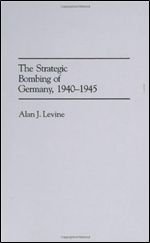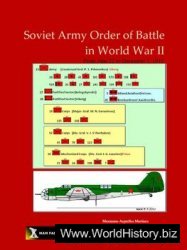Jesse Walter Fewkes first used the term ‘ethno-archaeologist’ in 1900, referring to an archaeologist who applies his knowledge of a group’s current or recent culture to the study of its prehistory. This is similar to the ‘direct-historical approach’ formally defined by Waldo Wedel in 1938 and depends on cultural continuity over time. This approach was used by a number of archaeologists in the United States during the late nineteenth century and early twentieth century, including Arthur Parker in the Northeast, Wedel and William Duncan Strong in the Great Plains, Julian Steward in the Great Basin, and Fewkes and Frank Hamilton Cushing in the Southwest, and it still plays an important role in archaeological interpretation. It is not considered to be ethnoarchaeology by current scholars, who argue that ethnoarchaeology concerns more general links between human behavior and material patterning that are not dependent upon cultural continuity.
The summary of ethnoarchaeology’s history largely follows that of Nicholas David and Carol Kramer, who in their 2001 book Ethnoarchaeology in Action divide the history of ethnoarchaeology into three periods: Initial, New Ethnoarchaeology, and Recent. They date the beginning of modern ethnoarchaeology to a 1956 paper by Maxine Kleindienst and Patty Jo Watson, titled ‘Action archaeology: the archaeological inventory of a living community’. Kleindienst and Watson argued that the archaeologist, ‘with his own theoretical orientation’, needed to conduct fieldwork to collect appropriate data for archaeological applications.
The Initial period of ethnoarchaeology is mostly exploratory, descriptive, and focused on particular material culture classes. Modern Yucatecan Maya Pottery Making by Raymond Thompson, published in 1958, is a landmark study in this period because Thompson addresses how his descriptive work may be used by archaeologists. George Foster’s 1960 article ‘Life expectancy of utilitarian pottery in Tzintzuntzan, Michoacan, Mexico’ is an early attempt in ethno-archaeology to consider how artifacts are actually discarded and enter the archaeological record.
The New Ethnoarchaeology developed from the New Archaeology or processual archaeology, an important theoretical shift in American archaeology following Lewis Binford’s article ‘Archaeology as anthropology’ in 1962. The New Archaeology regarded culture as the external, nonbiological means of human adaptation to the environment. It also advocated an explicitly scientific approach to archaeological inquiry. This theoretical shift directed ethnoarchaeology toward studies of landscape and resource use, particularly by foragers, and toward work that considered how cultural remains entered the archaeological record. Important studies of hunting and gathering groups include work with the Ngatatjara Aborigines in Australia (Richard Gould), the! Kung San in southern Africa (John Yellen and others), the Nunamiut in Alaska (Lewis Binford), the Alyawara of central Australia (James O’Connell), and the Hadza in Tanzania (James O’Connell, Kristen Hawkes, and others). Studies of agricultural villagers include research by Patty Jo Watson and Carol Kramer in Iran and William Longacre in the Philippines. Publications appeared on the use of space, both within individual settlements and broader landscapes, and on-site formation processes.
The Recent period is characterized by the growing influence of postprocessualism within archaeology and ethnoarchaeology. This perspective downplays function and adaptation and emphasizes the role of human choice and agency in culture. David and Kramer start this period in 1982 with the publication of Ian Hodder’s book Symbols in Action, which uses ethnoarchaeology to present a different view of material culture. Material patterns and objects are not just the end result of human behavior, Hodder argued; they also influence and shape that behavior. Artifacts are not passive evidence of culture but symbols in action. Hodder was inspired by scholars, such as the sociologist Pierre Bourdieu, whose practice theory has become increasingly important in archaeology. Post-processualism does not replace processualism and related theoretical perspectives, however; this period also displays continuity in theory and in actual projects from the New Ethnoarchaeology period. Frenchspeaking ethnoarchaeologists such as Valentine Roux also continued to work in the positivist tradition, adopting a theoretical position known as ‘logicism’ that is based on archaeological writings by Jean-Claude Gardin and outlined by Alain Gallay.
The fruits of long-term efforts in ethnoarchaeology became apparent in this period, through comparison and synthesis and the publication of findings from several large multiyear projects. Edited volumes such as Ceramic Ethnoarchaeology and From Bones to Behavior bring together studies from multiple authors and regions and evaluate the overall contributions of eth-noarchaeology to behavioral inferences from a particular artifact class. The Coxoh Ethnoarchaeology Project, led by Brian Hayden, conducted fieldwork in three communities in the Maya highlands between 1977 and 1979 and led to important publications on the production and use of flaked stone, ground stone, and ceramic artifacts as well as refuse disposal. The Man-dara Archaeological Project directed by Nicholas David and Judy Sterner began in 1984, conducting research in Cameroon and Nigeria on ceramic manufacture, metallurgy, household compounds, and other topics. Longacre’s Kalinga Ethnoarchaeological Project has continued over 30 years and is discussed further below.
To date, ethnoarchaeological projects have been conducted all over the world, in settings ranging from hunting-gathering camps to state-level societies. Topics include a wide variety of material remains and artifact classes, such as architecture, faunal bone, botanical remains, basketry, flaked stone, ceramics, glass, and metals. Activities and cultural processes have also been studied, such as the use of space within buildings, sites and settlements, and broader landscapes, site abandonment, and the development and transition of decoration and style. All of these studies are too varied and numerous to adequately summarize here. For more information, readers are referred to the ‘Further reading’ section, especially the excellent overview by David and Kramer.




 World History
World History









